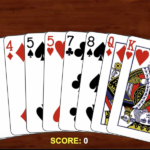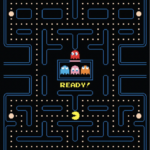The Dominoes Game: A Comprehensive Guide
Introduction: Dominoes is a classic game that has been enjoyed by people of all ages for centuries. With its simple yet strategic gameplay, dominoes offers endless entertainment and opportunities for socializing. Whether played casually with friends and family or competitively in tournaments, mastering the dominoes game requires understanding its rules and developing strategic skills. In this comprehensive guide, we’ll explore the fundamentals of playing the dominoes game, providing valuable insights to help you become a skilled player.
Understanding the Basics of the Dominoes Game: Dominoes is typically played with a set of rectangular tiles, also known as dominoes, each divided into two squares and marked with a series of dots or pips ranging from zero to six. The game can be played by two or more players, and the objective is to be the first to play all your dominoes or to have the lowest score when the game ends.
How to Play the Dominoes Game:
- Setup: To begin the game, shuffle the dominoes facedown on the playing surface, known as the boneyard or stockpile. Each player then draws a specific number of dominoes, typically seven tiles for a two-player game, five tiles for a three or four-player game, and fewer tiles for larger groups.
- Gameplay: The player with the highest double domino (a tile with the same number of pips on both ends) begins the game by playing this domino in the center of the playing area. If no player holds a double, the player with the highest tile starts the game. Subsequent players take turns adding their dominoes to the layout by matching the number of pips on one end of their tile to an open end of a tile already on the table.
- Scoring: Points are typically awarded at the end of each round based on the total number of pips remaining in each player’s hand. The winner of the round scores zero points, while the other players count the pips on their remaining dominoes and record the total as their score for the round.
- Winning: The game continues until one player plays all their dominoes, achieving a victory known as “going out.” Alternatively, players may agree on a predetermined number of rounds, and the player with the lowest total score at the end of the game is declared the winner.
Strategies for Success in the Dominoes Game:
- Pay Attention to the Board: Keep a close eye on the layout of the dominoes on the table, known as the “board.” Look for opportunities to play your tiles strategically to maximize your chances of matching and minimizing your opponents’ options.
- Plan Ahead: Anticipate your future moves based on the tiles in your hand and the layout of the board. Strategically reserve tiles that can potentially create scoring opportunities or block your opponents’ moves.
- Keep Track of Played Tiles: Remember which tiles have been played and which are still in the boneyard. This information can help you make informed decisions about which tiles to play and which to hold onto for future rounds.
- Play Defensively: If you cannot match a tile on the board, consider playing defensively by adding tiles to the layout that are less likely to benefit your opponents or open scoring opportunities for them.
Conclusion:
The dominoes game offers a perfect blend of strategy, skill, and social interaction, making it a timeless favorite among players worldwide. By understanding the rules, honing your strategic skills, and practicing good sportsmanship, you can become a skilled player and enjoy countless hours of fun and camaraderie with friends and family. So, gather your dominoes, set up the playing area, and embark on a thrilling journey of strategic gameplay in the captivating world of the dominoes game.








































